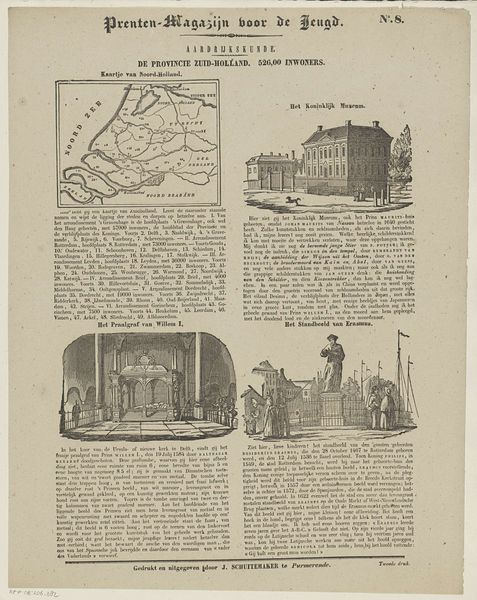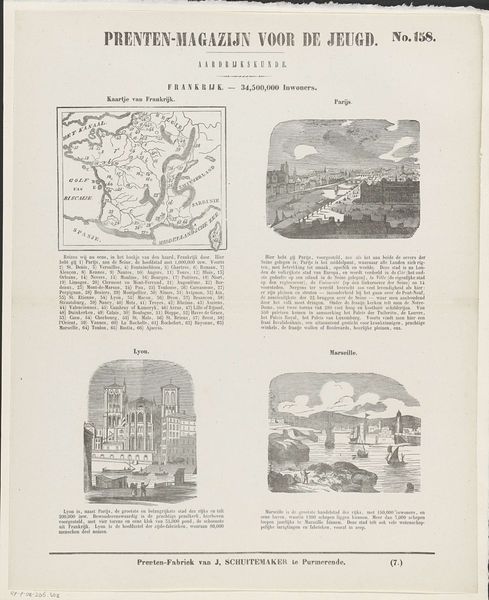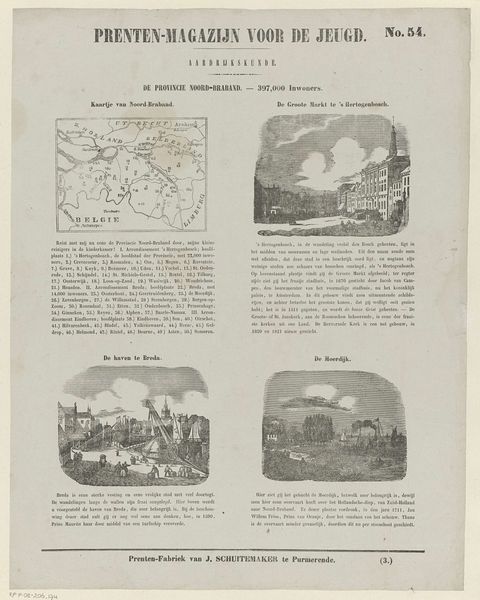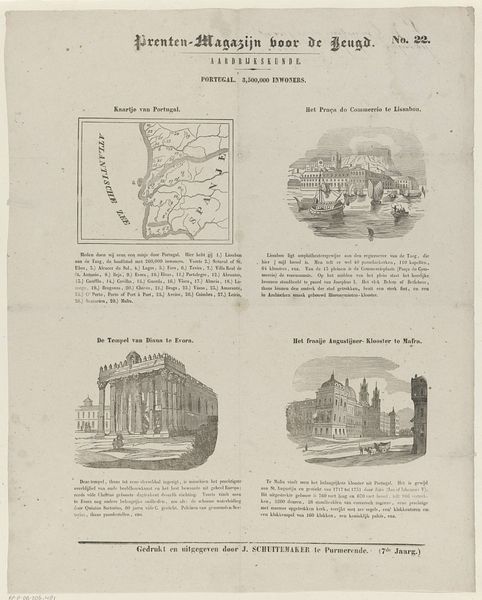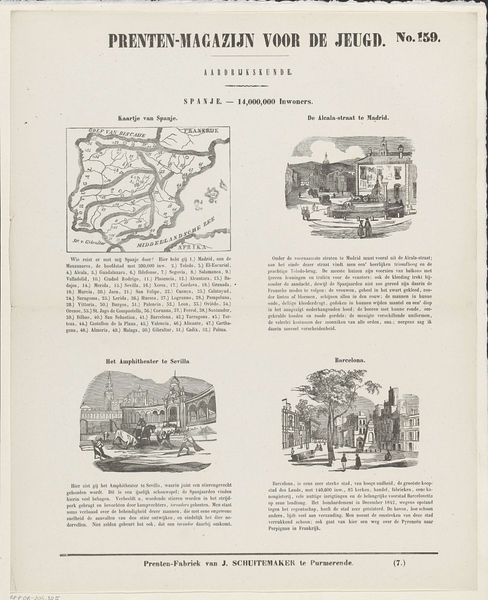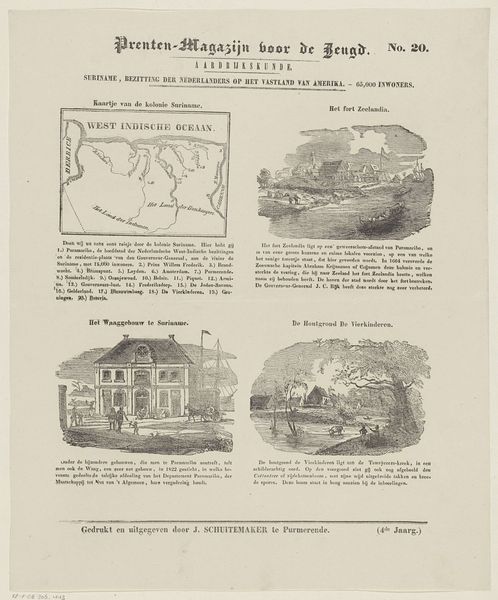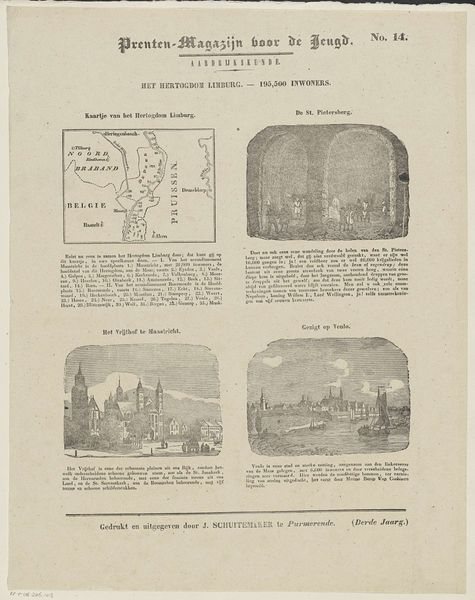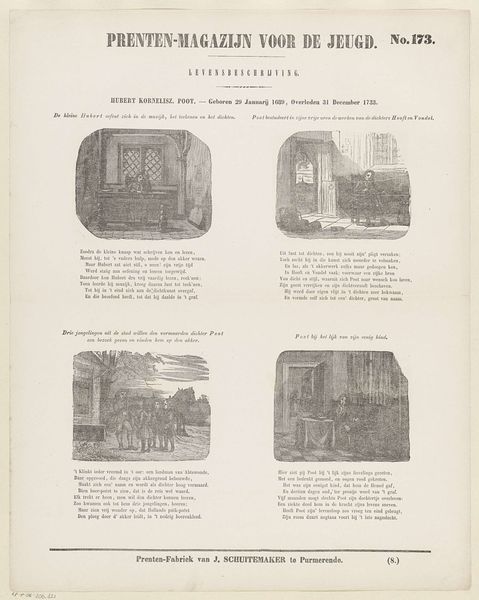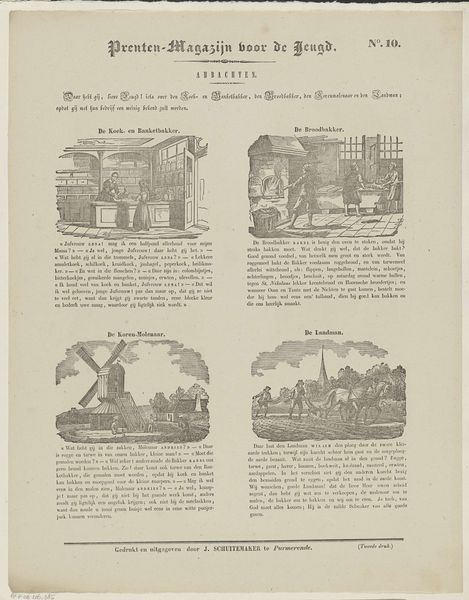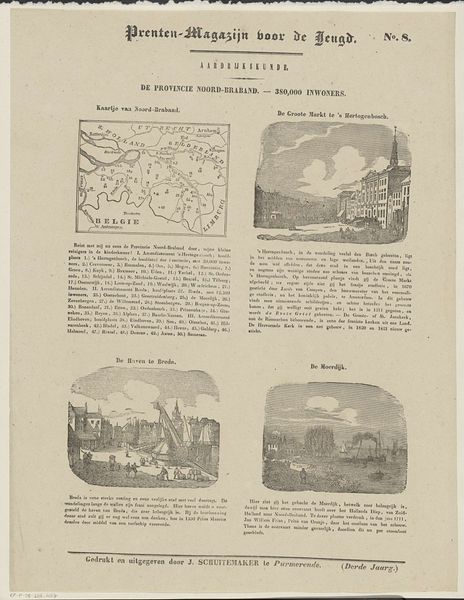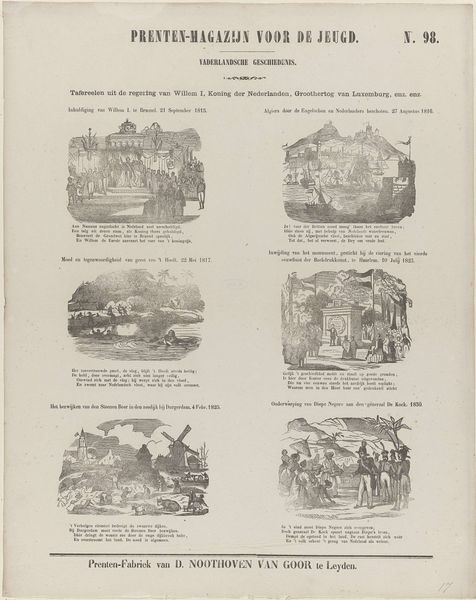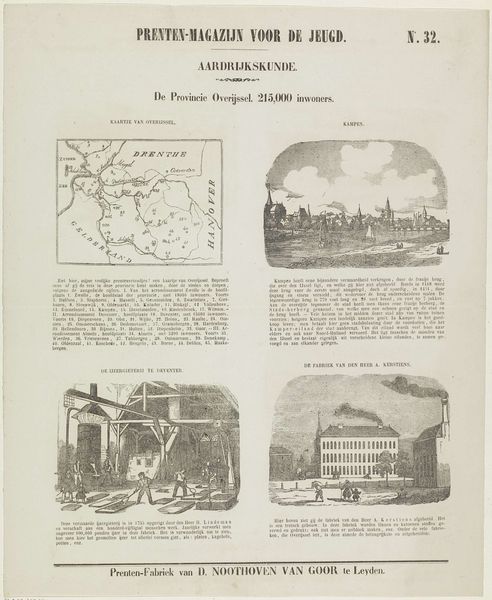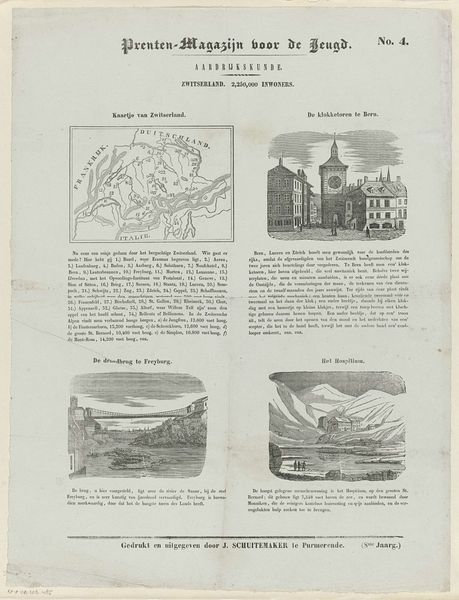
graphic-art, print, engraving
#
graphic-art
#
dutch-golden-age
# print
#
old engraving style
#
archive photography
#
historical photography
#
engraving
Dimensions: height 420 mm, width 336 mm
Copyright: Rijks Museum: Open Domain
Curator: This print, "De provincie Zuid-Holland. 526,000 inwoners," made sometime between 1850 and 1881 by Willem Bal, offers us a glimpse into 19th-century Dutch life and its methods of documentation. It is currently held in the Rijksmuseum's collection. Editor: At first glance, it appears rather academic. The monochromatic engraving and dense layout feel very informational, less about artistic expression and more about conveying specific data, almost like an early form of infographics. Curator: Precisely! Its purpose was primarily educational. These types of prints were intended for the youth, functioning as accessible geography lessons through visually appealing imagery and text. We see a map of Zuid-Holland at the top left. Editor: It's fascinating how it attempts to encompass the entire scope of the province, from its physical layout to snippets of cultural importance. I am especially interested in the image that appears to show an interior space. What can we tell of this building? Curator: That's likely the synagogue, offering insights into religious life within the province. Prints such as these also reveal details of public life, historical figures, and local buildings and serve as time capsules. It captures how knowledge and Dutch national identity were constructed for younger generations. The inclusion of what appears to be an outdoor commemorative statue provides evidence of key historical and/or cultural memory events. Editor: It makes you wonder whose history gets represented. This composition, despite being educational, must be analyzed to unpack the political implications, power structures, and selective representation that it conveys, especially regarding identity and societal values for youth during that era. I’m interested to analyze the symbols deployed to encourage patriotism. Curator: Absolutely. Looking at it today, we should be considering the social and political climate that influenced its design and distribution. This piece acted as both an educational tool and a means to propagate a certain perspective on Dutch heritage and regional pride, framing knowledge production through a specific lens. Editor: Seeing this work underscores how critical examination, even of seemingly straightforward educational material, can reveal a much richer understanding of a culture’s underlying assumptions and biases. It speaks to the constructed nature of nationhood and its active reinforcement through such media. Curator: Agreed. Its role as a curated piece of history raises interesting questions about visual pedagogy.
Comments
No comments
Be the first to comment and join the conversation on the ultimate creative platform.
